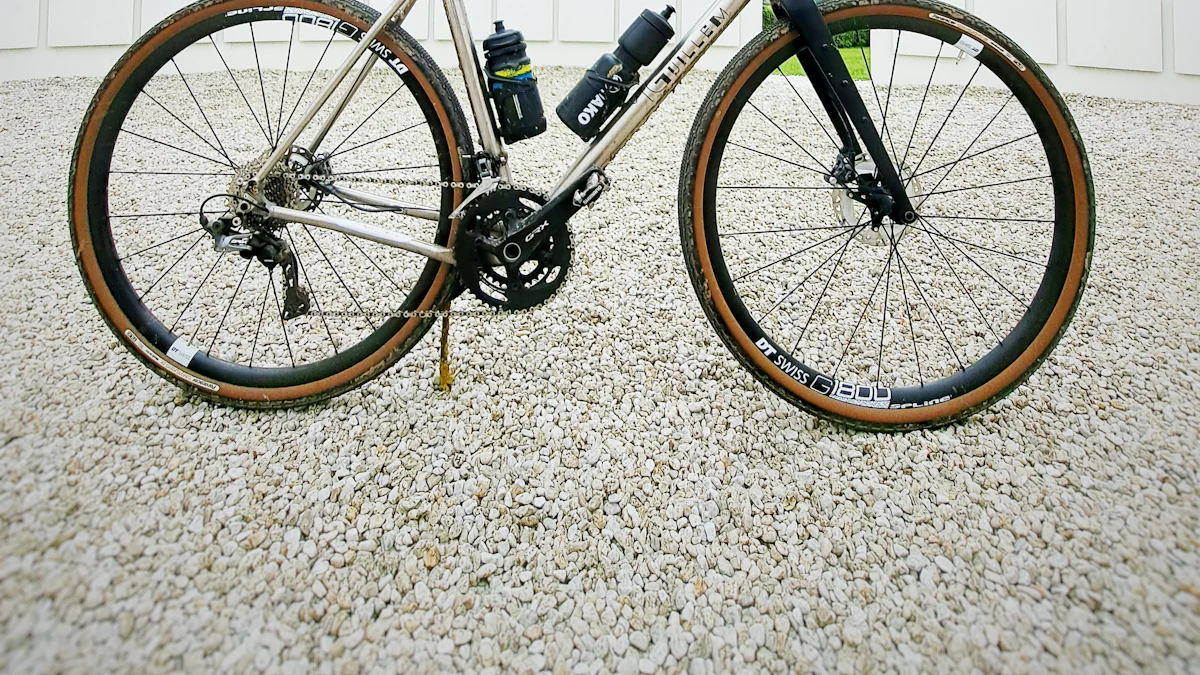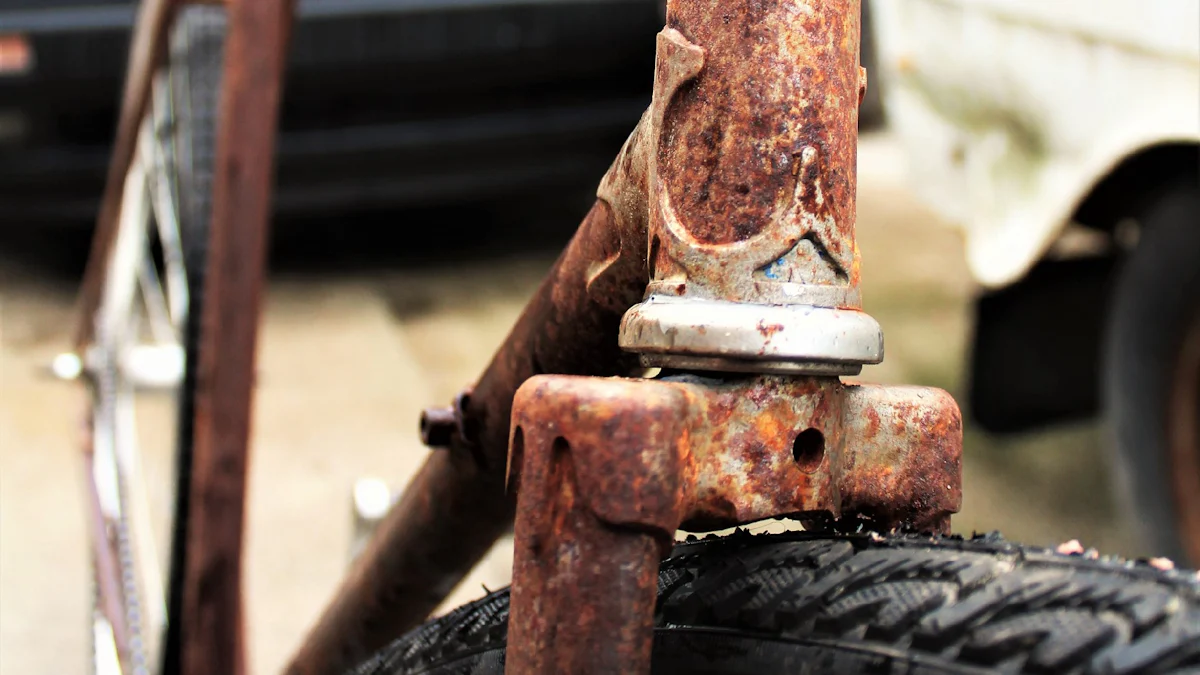
When comparing steel vs titanium bikes, I often consider their unique characteristics. Steel offers unmatched reliability and affordability, while titanium stands out for its lightweight durability and exclusivity. Titanium bikes, with a projected market size of $400 million by 2028, appeal to those seeking high-performance and prestige. Choosing the right material depends on your priorities.
Key Takeaways
- Steel bikes cost less, last long, and are easy to fix. They are great for casual or fun riders.
- Titanium bikes are light, strong, and don’t rust. They are perfect for riders wanting comfort and high performance on long trips.
- Picking steel or titanium depends on your money, riding needs, and how much care you want to give your bike.
Strength and Durability

Steel’s Robustness and Longevity
Steel bike frames have earned a reputation for their exceptional strength and durability. I often recommend steel for riders who prioritize reliability. Steel frames can endure significant wear and tear, making them ideal for long-term use. While steel is prone to rust, regular maintenance can prevent corrosion and extend its lifespan. Unlike titanium, steel offers a simpler repair process. Skilled mechanics are widely available, and the welding process is straightforward. This accessibility ensures that steel frames remain a practical choice for riders who value ease of maintenance.
Titanium’s Corrosion Resistance and Strength
Titanium stands out for its remarkable corrosion resistance. When exposed to oxygen and water, titanium forms a protective oxide layer that prevents rust. This layer regenerates if damaged, a process known as passivation, which enhances its longevity. Titanium’s strength-to-weight ratio surpasses that of steel, offering a lightweight yet durable option. It resists fatigue and bending stresses better than steel, making it a reliable choice for riders seeking a frame that can withstand years of use. On the Galvanic Scale, titanium ranks just below noble metals like gold, highlighting its superior resistance to corrosive agents.
Maintenance and Repair Considerations
When it comes to repairs, steel frames have a clear advantage. Steel welding is simpler and more accessible, with repair services readily available. Titanium, on the other hand, requires specialized skills and equipment. The welding process for titanium demands careful control and cleanliness, making repairs more challenging. Finding a qualified mechanic for titanium frames can be difficult, and repair costs are often higher. Steel frames, by contrast, can handle minor damages like dents without compromising safety, making them a cost-effective option for riders who anticipate occasional repairs.
Comfort and Ride Quality

Steel’s Vibration Absorption and Ride Feel
Steel bike frames often deliver a smooth and stable ride, which many riders appreciate. I’ve noticed that steel’s natural vibration absorption contributes to its reputation for comfort. However, scientific studies reveal that the material itself plays a smaller role in damping vibrations than the frame design and construction. For instance:
- Steel frames, like other metal frames, exhibit minimal damping properties.
- The frame’s geometry and tubing significantly influence vibration absorption.
- Tire characteristics, such as size and pressure, often have a greater impact on ride feel.
In my experience, steel bikes can range from feeling sluggish to heavenly, depending on their design. This variability makes steel a versatile choice for riders who value a customizable ride experience.
Titanium’s Supple and Forgiving Ride
Titanium frames excel in delivering a supple and forgiving ride. I’ve found that titanium’s unique properties allow it to flex slightly under stress, which reduces road vibrations. Riders often describe the ride quality as smooth and responsive. One cyclist shared that switching from a carbon bike to a titanium frame provided the smoothest ride they’d ever experienced. This feedback aligns with my observations that titanium frames balance comfort and performance exceptionally well. While tire size and pressure remain critical factors, titanium’s inherent flexibility enhances its reputation for comfort.
Long-Distance Comfort Comparison
When comparing steel vs titanium bikes for long-distance rides, both materials offer distinct advantages. Riders often praise steel bikes for their comfort on rougher roads, especially when paired with wider tires. One user noted that their steel bike felt more comfortable on uneven terrain compared to their titanium bike, which had narrower tires. On the other hand, titanium bikes shine in climbing efficiency and overall smoothness. Another rider highlighted that their titanium bike provided a splendidly comfortable ride, nearly matching their steel touring bike. Ultimately, tire setup and frame design play pivotal roles in determining long-distance comfort.
Price and Weight
Affordability of Steel vs Titanium Bikes
Steel bikes offer a more budget-friendly option compared to titanium bikes. I’ve noticed that steel strikes a balance between cost and performance, making it an excellent choice for riders who want quality without overspending. Titanium bikes, while once considered a luxury, have become more accessible due to advancements in manufacturing. However, they still sit at a higher price point. High-end titanium frames can exceed $3,000, which reflects their premium positioning in the market. For riders prioritizing affordability, steel remains the better choice.
Weight Differences and Performance Impact
Weight plays a crucial role in cycling performance. Modern steel frames can rival titanium in weight, with some weighing as little as 2.6 to 3.2 pounds. Titanium frames typically weigh around 3.2 pounds, but their lightweight nature still appeals to many cyclists. I’ve found that steel frames often enhance acceleration and climbing efficiency, especially in competitive cycling. As one expert noted, “If light weight is your most important factor, and you want the lightest frame, then steel is the better option.” Titanium, however, offers a significant weight reduction—up to 40%—when paired with high-end components, making it ideal for riders seeking a lighter overall bike.
Cost-Effectiveness and Value for Money
Steel bikes deliver exceptional value for money. Their affordability, combined with durability and reliability, makes them a practical investment. Titanium bikes, while resistant to rust and lighter, come with higher initial costs and potential repair challenges. I’ve observed that steel bikes often have lower long-term maintenance costs, as rust issues are rare with proper care. For riders seeking a balance of performance, comfort, and cost, steel bikes stand out as the more cost-effective option. Titanium’s premium price tag may appeal to those prioritizing exclusivity and weight savings, but steel offers unmatched reliability for most cyclists.
Suitability for Different Riders
Ideal for Casual and Recreational Riders
Casual riders often prioritize comfort, affordability, and ease of use when selecting a bike. Steel frames meet these needs exceptionally well. They provide a smooth ride quality by absorbing shocks and vibrations effectively. This makes them ideal for leisurely rides on uneven terrain or long journeys. Steel’s affordability also appeals to recreational cyclists who want a reliable bike without overspending. Modern steel frames are lighter than ever, enhancing both comfort and performance.
Titanium bikes, while more expensive, attract casual riders seeking lightweight durability. Titanium’s corrosion resistance and longevity make it a worthwhile investment for those who ride frequently. However, I’ve noticed that most casual riders lean toward steel for its balance of cost-effectiveness and comfort.
Best Choice for Long-Distance and Touring Cyclists
For long-distance touring, titanium bikes stand out. Their exceptional strength-to-weight ratio ensures durability without adding unnecessary weight. Titanium’s corrosion resistance allows it to withstand various weather conditions, making it ideal for extended trips. I’ve found that titanium frames absorb road vibrations effectively, providing a comfortable ride over rough terrain. Touring cyclists often appreciate the longevity of titanium, as a well-made frame can last a lifetime.
Steel bikes also have their place in touring. Their durability and ease of repair make them a practical choice for riders venturing into remote areas. Steel’s springy quality reduces fatigue on long rides, offering a comfortable experience for hands and legs. While titanium may excel in weight and weather resistance, steel remains a dependable option for touring cyclists.
Off-Road and Adventure Cycling Preferences
Off-road cyclists require bikes that can handle rugged terrain and unpredictable conditions. Steel frames excel in this area due to their durability and natural vibration damping properties. I’ve observed that steel bikes provide a smoother ride on bumpy roads, reducing fatigue during long adventures. Their ease of repair is another advantage, especially for riders exploring remote trails.
Titanium bikes, with their higher strength-to-weight ratio, offer a unique combination of stiffness and comfort. They effectively dampen vibrations while maintaining a lightweight structure, making them suitable for off-road performance. However, steel’s reliability often makes it the preferred choice for adventure cyclists who value practicality and cost-effectiveness.
Choosing between steel and titanium bikes depends on your priorities.
- Steel: Affordable, robust, and repairable. Producing steel emits 2.15 kg of CO₂, making it more eco-friendly.
- Titanium: Lightweight, corrosion-resistant, and durable. Its production emits three times more CO₂ than steel.
Consider your budget, riding style, and environmental impact to make the best choice.
FAQ
What are the main advantages of titanium bikes over steel bikes?
Titanium bikes excel in corrosion resistance, lightweight durability, and long-term performance. I’ve found them ideal for riders seeking premium quality and a smoother ride experience.
Are steel bikes suitable for competitive cycling?
Yes, modern steel frames can rival titanium in weight and performance. I’ve seen competitive cyclists choose steel for its affordability, reliability, and customizable ride characteristics.
How do I decide between steel and titanium for touring?
Consider your priorities. Steel offers affordability and repairability, while titanium provides lightweight durability and corrosion resistance. I recommend steel for budget-conscious riders and titanium for long-term investments.

